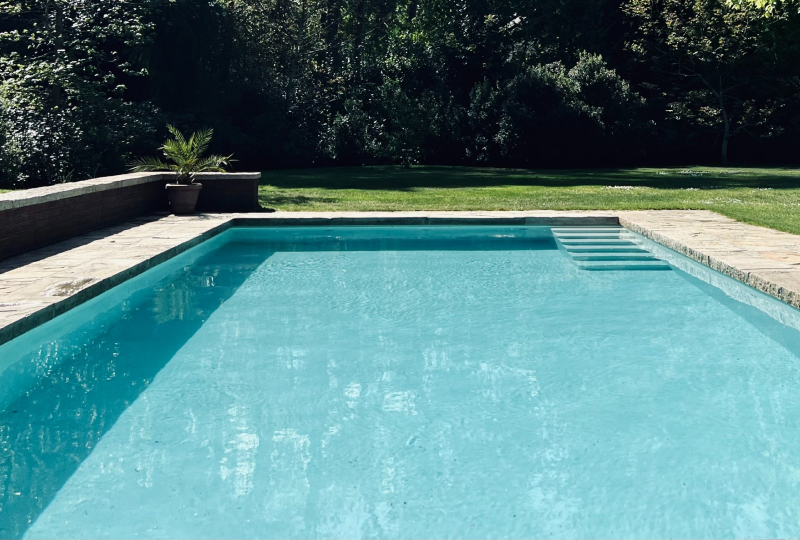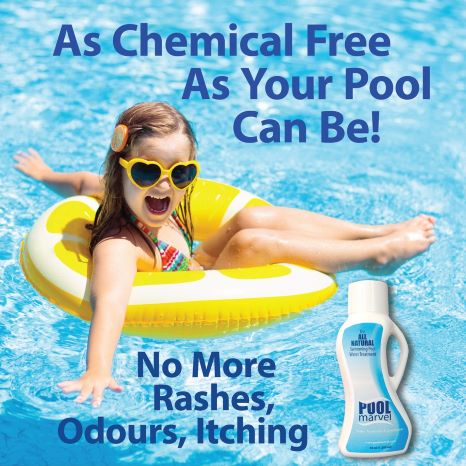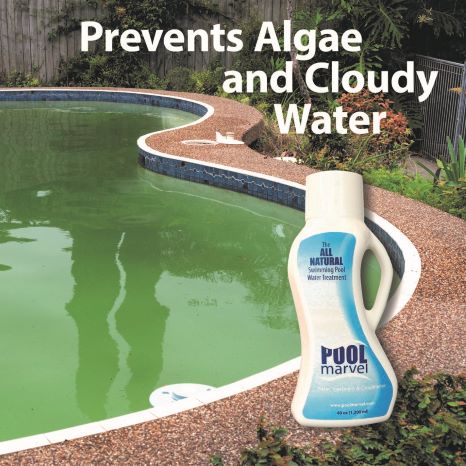
Pool Filters
Pool filters play a vital role in keeping your pool sparkling clean and clear during the entire pool season. There are three main types of filters available: sand, cartridge, and diatomaceous earth, or D.E., all of which work to remove contaminants from the pool water.
Pool filters are available in various sizes, shapes, replacement frequencies, and filtration rates. Choosing the best pool filter for your pool depends on your pool size, seasonal climate conditions, frequency of use, and bather load.
Jump To Section:
What Does a Pool Filter Do?
Types of Pool Filters
How to Clean Pool Filters
The Different Filter Settings
Pool Filter Pressure
What Does A Pool Filter Do?
A pool filter removes undissolved debris such as dirt, hair, grass, and body oils from pool water.
Pool water is pumped into the filter where one of three materials completes the filtering: sand, cartridges, or diatomaceous earth (D.E.). Each type of pool filter can capture a different number of microns, which is the measurement used by filters to describe the size of contaminants they can remove.
After the impurities are removed, the resulting clear, clean water is pumped back into the pool through the return jets on the pool walls. If you have a heater or salt chlorine generator, the water flows through these systems before returning to the pool.
Types Of Pool Filters
There are three categories of pool filters, each with its own advantages and disadvantages: sand, cartridge, and diatomaceous earth, or D.E.
Sand Filters
Sand filters process water from the pump using a filtration tank full of sand. The standard media found inside the tank is #20 silica sand, which can remove particles that are at least 20 microns. The filtration efficiency can increase with alternative media, such as Zeosand or FilterGlass.
The pool water enters the tank through the diffuser and travels through while dirt and debris are trapped between the sand grains. After reaching the bottom of the filter, the water enters the laterals before returning to the pool.
As the amount of dirt and debris increases in a sand filter, the pressure increases within the filter canister. A pressure gauge displays this reading, which needs to be monitored by the pool owner. When the pressure has increased by 8-10 psi above its normal level, it’s time to backwash the pool filter. Every 3-5 years, the sand needs replacing.
There are two types of sand filters available: top-mounted and side-mounted filters. Top-mounted sand filters are less costly and require less storage room, but sand replacement is easier in a side-mounted filter.
Advantages:
- More affordable
- Require the least amount of maintenance
Disadvantages:
- The least effective filter; smaller particles can remain in pool water
- Bulky
- Needs regular backwashing and rinsing, which wastes water
Cartridge Filters
Cartridge filters use replaceable cartridges – large sheets of polyester cloth or paper folded accordion-style – as the filter media to collect dirt and debris. As the water flows through the filter, fine particles and debris as small as 10 microns become trapped in the pleats. Clean water then goes back to the pool.
A gauge on the top of cartridge filters will provide an alert when cleaning is necessary. Cartridge filters don’t need backwashing, which produces water savings. They’re popular in residential pools with low bather loads and are strongly recommended for pools containing variable speed pumps and/or laminar systems. Learning how to clean cartridge filters is relatively straightforward.
Cartridge filters can last 1-3 pool seasons. Usually, pool owners purchase a new cartridge and keep the old one for opening the pool.
Advantages:
- Energy-efficient, creating less water waste from the lack of backwashing
- Simple to install
- Easy to use
- Produces good water clarity
- Performs efficiently at low speeds, such as with variable-speed pumps
Disadvantages:
- Are less effective in large pools or pools with algae issues
- Don’t filter as finely as D.E. filters and get dirty quickly
- Requires manual cleaning, which can be time-consuming
- Needs replacing at a higher frequency than sand filters
Diatomaceous Earth (D.E.) Filters
D.E. filters work similarly to sand filters but use a heat-treated crumbly white powder made from a naturally occurring sedimentary rock instead of sand. This filter powder, called Diatomaceous Earth, covers the plastic grids inside the filter. When pool water runs through the filter, the filter powder – which is finer than sand – collects and traps small particles.
D.E. particles are hollow and have high porosity, allowing them to trap and remove particles as small as 3 microns. Every time you vacuum, you need to backwash and add more D.E. powder.
D.E. filter grids need replacing every 2-3 years. Otherwise, holes can form in the grids, allowing D.E powder to slip through and contaminate your pool water.
Advantages:
- Removes the smallest particles
- Provides optimal water clarity
Disadvantages:
- More complicated to operate
- The most expensive and maintenance-heavy filter option
- Challenging to locate for above-ground pools
- In certain regions, used D.E. powder can be difficult to dispose of
- If inhaled, D.E. powder can be harmful
How To Clean Pool Filters
Each type of pool filter has its own process for cleaning:
How To Clean Sand Filters
Every few weeks, sand filters require manual backwashing.
1. Turn off the pool pump and set your multiport valve to the backwash setting. Connect your backwash hose to the waste port, then turn the pump back on.
2. Allow backwashing to occur until the water looks clear – typically 1-2 minutes.
3. Turn off the pump and set your valve to rinse. Rinse until the sight glass is clear.
4. Turn off the pump and set your valve to the filter setting. Add sand filter cleaner to the pump’s strainer.
5. Turn the pump on for approximately 15 seconds to dissipate the cleaner.
6. Turn off the pump and leave it off overnight, or for a minimum of 8 hours.
7. Complete backwashing again for 3-5 minutes.
8. Turn off the pump and set your valve to rinse. Rinse until the sight glass is clear.
9. Turn the filter system back on using the filter setting.
How to Clean Pool Cartridge Filters
You need to clean your cartridge filter when the pressure reaches 10 psi above the normal level.
1. Prepare the filter cleaning solution in a bucket that is large enough for the filter.
2. Turn off your pool pump, remove your filter, and check it for problems.
3. Rinse and remove any debris.
4. Soak the filter in the cleaning solution, ideally overnight.
5. Spray water gently to rinse any remaining residue off the filter.
6. Allow the filter to dry completely.
7. Reinstall the filter and turn on your pool pump.
How to Clean Diatomaceous Earth (D.E.) Filters
D.E. filters need to be cleaned when the pressure is 8-10 pounds above normal. During regular maintenance, filter disassembly is unnecessary.
Every 6 months to a year, the filter must be taken apart and thoroughly rinsed. This is necessary because the monthly backwashing will never remove all of the dirt that’s trapped between the grids.
Determining how often to backwash your D.E. filter depends on the amount of debris in your pool water, the number of bathers in your pool, and the length of time your pool filter has been running. During pool season, you should backwash monthly.
1. Turn off the pool pump and set your multiport valve to the backwash setting. Connect your backwash hose to the waste port, then turn the pump back on.
2. Allow backwashing to occur until the water looks clear – typically 1-2 minutes.
3. Turn off the pump and set your valve to rinse. Rinse for approximately 1 minute.
4. Remove the D.E. filter manifold and take out all the grids. Using a hose, thoroughly flush all debris, including the D.E. powder. Rinse out the tank. Put the filter back together. Note: This step is not necessary when just backwashing the filter.
5. Turn off the pump at the circuit breaker and set your valve to filter mode.
6. Open the air relief valve to let the air out of the filter.
7. Turn the pump back on and close the air relief valve once water starts coming out of it.
8. Refer to the manual to determine the amount of D.E. powder to add after backwashing. Mix the appropriate amount of D.E powder in a bucket of water. Add the mixture to the skimmer that is closest to the pump and the filter.
The Different Filter Settings
There are usually seven pool filter settings on a multiport valve:
Filter Setting
The filter position is the most common filter setting position. It’s used when you’re operating your pool and want to keep the water in your pool clean by flowing through the filter.
Backwash Setting
After the filter setting, backwash is the second most frequently used setting. Use it when you have a dirty filter, usually right after vacuuming, or when the pressure is 10 psi over normal pressure. Any dirt and debris pumps to waste through the backwash line.
Rinse Setting
The rinse setting on a pool filter is only used following a backwash. Choose this setting to clean the filter medium in the filter housing and process water out a waste pipe rather than back into the pool.
Winterize Setting
If the water freezes, the winterize setting allows the water to expand slightly without causing damage to the valve. It also allows air into the filter to assist with draining water during the winterizing process.
Recirculate Setting
The recirculate setting bypasses the filter and sends the water straight back into the pool. The setting’s useful to keep water circulating to prevent stagnation when a filter needs repairing or replacing. It can also be used to disperse flocculant. This is likely the filter setting you’ll use the least.
Waste Setting
Pool water goes directly out your backwash waste hose when your filter is set to waste. This setting is beneficial when vacuuming debris that you don’t want to process through your filter – like a heavy infestation of algae.
Closed Setting
Selecting the closed setting turns off all water flow. The setting’s helpful during the winter or when you want to empty the strainer basket before the water goes into the pump.

Pool Filter Pressure
Pool filters operate under pressure which must be normal for your filter to provide optimal performance. When water flows normally, the pool filter pressure will be normal, and your filtration equipment will operate smoothly and safely. When the water flow changes, the pressure can increase or decrease substantially and create circulation system problems.
A filter pressure gauge allows you to monitor the filter pressure and know when the filter cartridge requires replacing or when backwashing is necessary. When pressure is too low, there is a blockage restricting water flowing into the pool pump. Higher than normal pressure indicates that the pool filter is dirty and needs to be backwashed or cleaned.
Remember the reading on the pool filter pressure gauge after installing your filter and turning your pool system on. This will be the normal pool filter pressure level you should strive to maintain. An average pool filter pressure should be between 10-25 psi but varies depending on the filter’s size, the size and strength of your pump, and the condition of your filter. Normal operating pressure can also be determined after backwashing or cleaning your filter.
Always check the pressure gauge on your filter as part of your regular pool maintenance.


